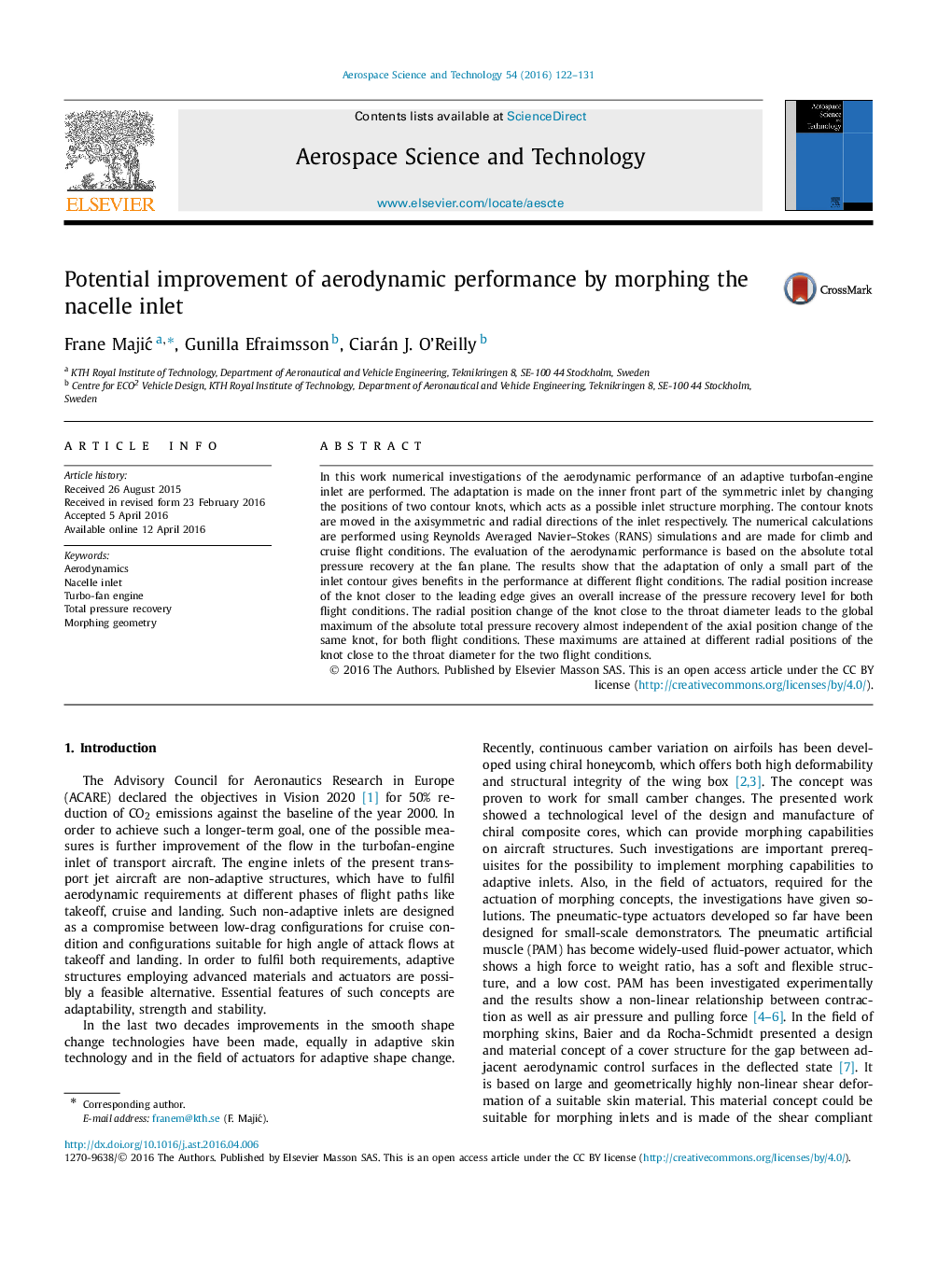| Article ID | Journal | Published Year | Pages | File Type |
|---|---|---|---|---|
| 8058558 | Aerospace Science and Technology | 2016 | 10 Pages |
Abstract
In this work numerical investigations of the aerodynamic performance of an adaptive turbofan-engine inlet are performed. The adaptation is made on the inner front part of the symmetric inlet by changing the positions of two contour knots, which acts as a possible inlet structure morphing. The contour knots are moved in the axisymmetric and radial directions of the inlet respectively. The numerical calculations are performed using Reynolds Averaged Navier-Stokes (RANS) simulations and are made for climb and cruise flight conditions. The evaluation of the aerodynamic performance is based on the absolute total pressure recovery at the fan plane. The results show that the adaptation of only a small part of the inlet contour gives benefits in the performance at different flight conditions. The radial position increase of the knot closer to the leading edge gives an overall increase of the pressure recovery level for both flight conditions. The radial position change of the knot close to the throat diameter leads to the global maximum of the absolute total pressure recovery almost independent of the axial position change of the same knot, for both flight conditions. These maximums are attained at different radial positions of the knot close to the throat diameter for the two flight conditions.
Keywords
Related Topics
Physical Sciences and Engineering
Engineering
Aerospace Engineering
Authors
Frane MajiÄ, Gunilla Efraimsson, Ciarán J. O'Reilly,
